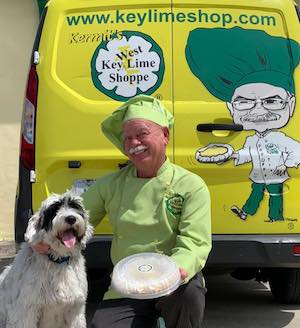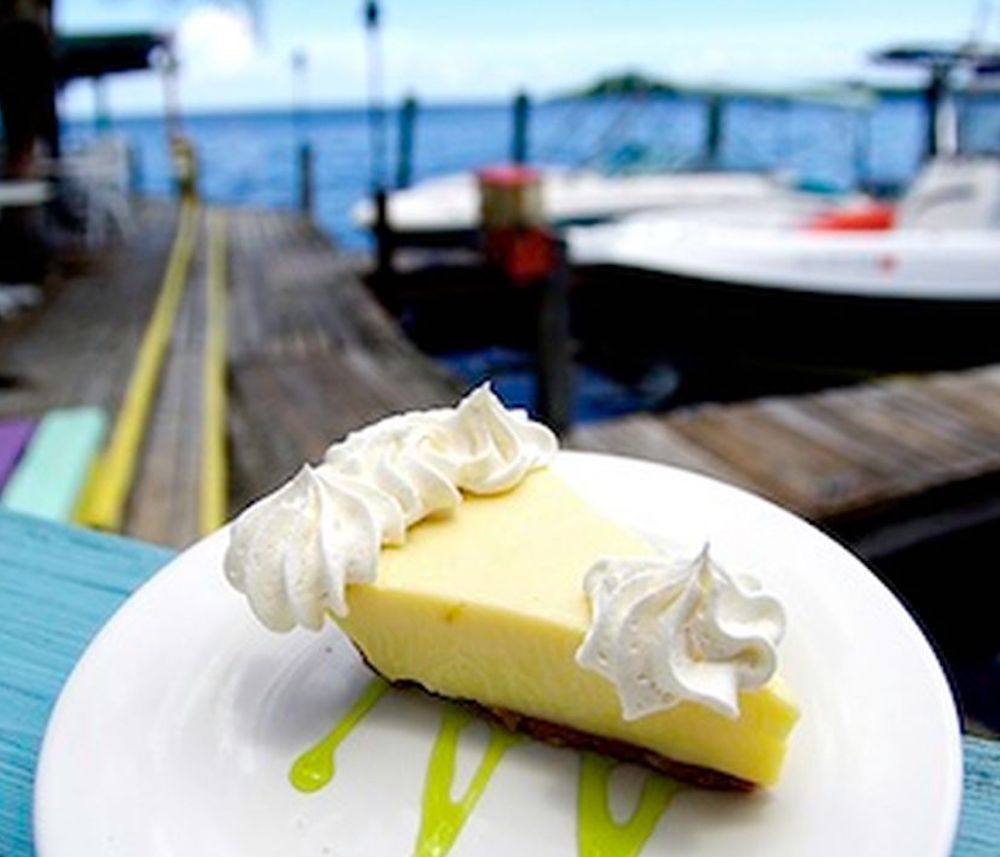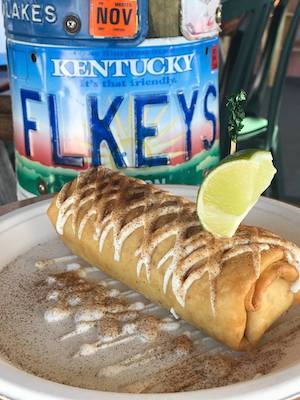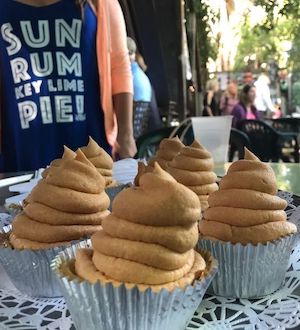Few people visit the Florida Keys without sampling a few slices of Key lime pie. Just as New York is famed for its thin-crust pizza, New Orleans for its beignets and Alaska for its king crab, the island chain is known for Key lime pie.
The signature dessert is made from the Key lime, a fruit sometimes grown in the Keys, that’s smaller and rounder than the Persian limes found in grocery stores. Millions of slices of the tart, creamy pie — voted the official pie of Florida by the state legislature in 2006 (yes, really!) — are savored every year by Keys visitors and locals.
According to the owner of Key West’s Curry Mansion Inn, a woman named Aunt Sally, a relative of estate owner William Curry, made the first Key lime pie. Key West historian Tom Hambright, on the other hand, surmises that Aunt Sally likely perfected a delicacy created by area fishermen.
While the pie’s exact birthdate and creator aren’t definitively proven, most people believe it originated in Key West in the late 19th century — before refrigeration and the debut of the Florida Keys Over-Sea Railroad, which brought fresh ingredients like milk to the island at high speed.
In fact, recipes for the original Key lime pie didn’t require refrigeration or baking. Instead, the acid in the Key lime juice reacted chemically with the other ingredients, a process called souring, and “cooked” the pie.
So what are Key lime pie’s primary ingredients? They’re actually quite simple: sweetened condensed milk, egg yolks and the juice of the tiny yellow Key lime. These limes, by the way, are unique for both their tartness and distinctive small size.

Kermit Carpenter, shown here with his trusty sidekick, is widely renowned for his fabulous Key lime pie creations.
The egg yolks give the pie a yellowish coloring — and despite what some misguided people might believe, lime-green pies are absolutely NOT authentic.
The cool, smooth-textured filling is typically nestled in a crust made from graham crackers and butter, and the pie is smothered in whipped cream or topped with meringue.
The controversy over which topping is better has raged for decades in the Keys. Those who adhere to the motto “waste not, want not” use the leftover egg whites to create a tall meringue topping. Whipped cream supporters may derive their preference from the pie’s early days, when cows were kept on nearby Stock Island and milk products had to be consumed quickly due to lack of refrigeration.
In any case, though local residents are generally quite easygoing, experts advise visitors to stay out of any debate among “Key lime culinarians” about which is the “real” way to make the luscious dessert.
Whatever it’s topped with, a good Florida Keys Key lime pie should be naturally tart, standing up well on a plate yet still looking and tasting creamy.
Today, Key lime pie can be found in many forms throughout the island chain —garnished with a raspberry drizzle, featuring a nut-infused or chocolate crust, frozen to make a sinfully delicious treat, or even enhanced with seasonal flavors.
Each spot places its individual hallmark on the creation.
For visitors to Key West, it’s almost mandatory to check out the offerings at Kermit’s Key West Key Lime Shoppe at 200A Elizabeth St. The emporium is the home of everything Key lime — from bottles of juice to Key lime sauces, soap, dressings, jellies and even dog treats.
The biggest attractions, though, are slices of traditional Key lime pie and indescribably good chocolate-covered frozen Key lime pie on a stick — and the exuberant shop owner Kermit Carpenter, who can often be seen standing out front in his chef’s garb, seemingly ready to “throw” a Key lime pie at unsuspecting passersby.
Click here to subscribe to the Florida Keys & Key West’s LGBTQ travel blog.



